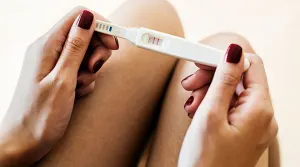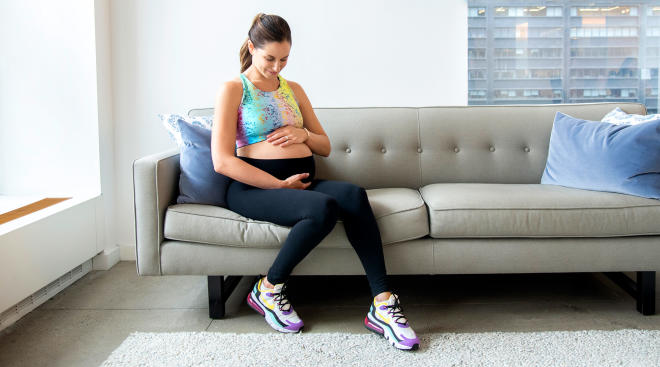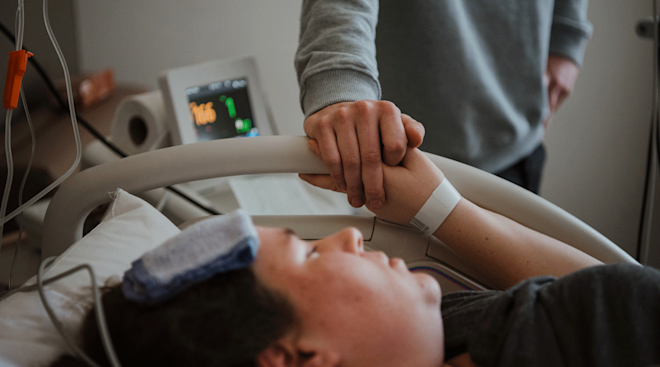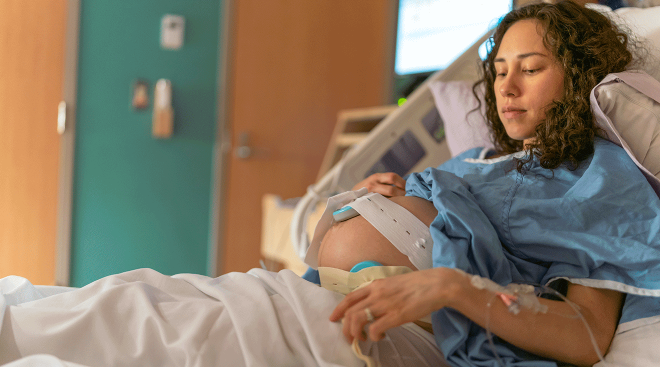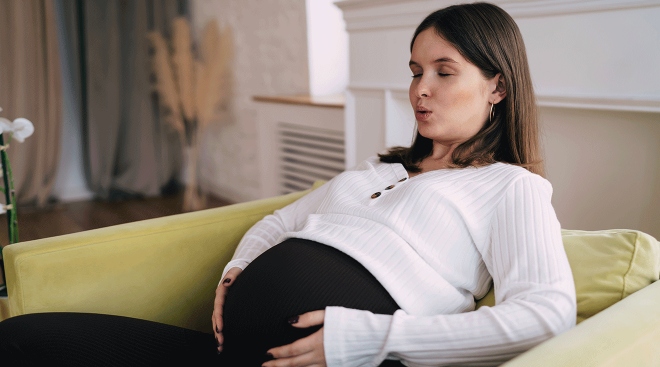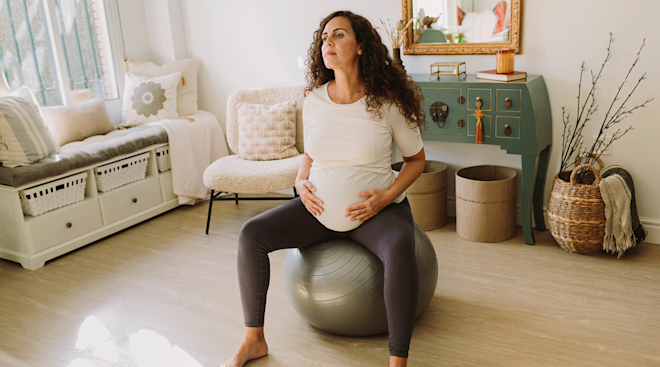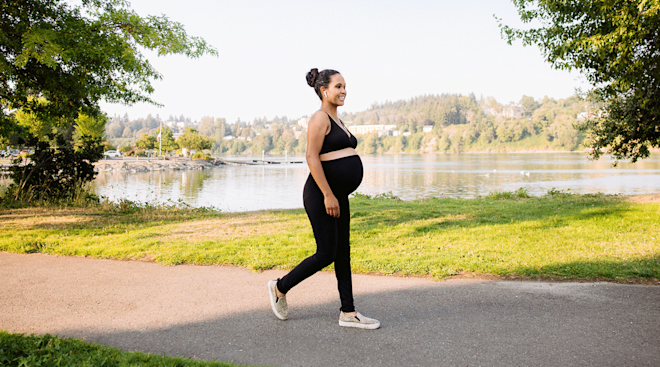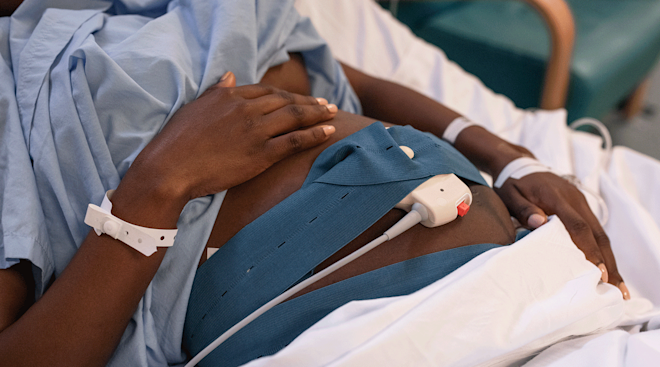Can You Eat During Labor? (and Why You Might Get Different Answers From Different Doctors)
Labor can get pretty long and, well, boring at times. It’s natural to wonder whether you can bring a snack to the delivery room—or at least sip on some water. That’s why I asked my provider about eating during labor early on in pregnancy. Of course, the answer I got wasn’t black-and-white: Essentially, your provider needs to assess your high-risk status before giving you the go-ahead to munch on anything. So, can you eat during labor? Can you drink anything? It depends on a few key factors. Read ahead for all the details—plus some recommended foods and liquids if your doctor does let you chow down.
- If you’re being induced, getting an epidural or are considered high-risk for any other reason, you likely won’t be able to eat during labor.
- Eating during labor, if your provider greenlights it, offers a lot of benefits—including increased energy, potential for a shorter labor, preventing exhaustion and maintaining good vital signs for you and baby.
- Some common food and drink options your provider might suggest during labor are fruits, breads, Jell-O, granola bars, coconut water, honey sticks, popsicles and applesauce.
- Experts recommend avoiding large, greasy and spicy meals while in labor.
Sorry to fuel the confusion, but the answer isn’t crystal-clear. Really, it depends. Typically, moms-to-be with low-risk pregnancies who’re laboring without interventions are allowed to eat light meals or snacks throughout labor, says Liesel Teen, BSN, RN, a labor and delivery nurse, mom of two and the founder of Mommy Labor Nurse. On the other hand, if you’re being induced, getting an epidural, have any factors that increase your risk for a C-section or your pregnancy’s considered high-risk in any way, you likely won’t be able to eat during labor.
“Most providers now agree eating and drinking during labor is fine if the mother and baby’s status is low-risk,” says Brooke Ray, CNM, WHNP, a certified nurse midwife and women’s health nurse practitioner in San Diego, California. Adds Teen: “Most of the patients where I worked were allowed ice chips and/or sips of water during labor at the very least. Of course, there are exceptions to the rules.”
Whether you can eat or drink during labor also depends on your individual hospital or birthing center’s policies and protocols. Different healthcare providers might also have different preferences, so it could even depend on who’s on shift that day, Teen says.
I wasn’t technically allowed to eat anything other than broth or Jell-O, but I was in labor for so long, my midwife actually had me eat a full dinner.
The main reason some providers have rules against eating during labor is your safety. “A lot of it has to do with anesthesia policies and whether or not there’s a chance the patient might end up needing a C-section,” explains Teen. Basically, having a full stomach can increase the risk of food aspiration into the lungs, especially during general anesthesia, warns Teen.
Christine Greves, MD, FACOG, an ob-gyn at the Orlando Health Women’s Institute in Florida, says she allows clear liquids during labor unless the patient needs a C-section. “Once a C-section is called, we stop oral intake, so nothing by mouth in order to reduce the risk of aspirating,” she says. “This can occur if you vomit what’s in your stomach, and if it goes into the wrong pipe, meaning into the windpipe and the lungs, that’s very dangerous.”
The good news is, only about 5 percent of pregnant patients require general anesthesia now, thanks to the advancement of local anesthetics like epidurals. And the chances of aspiration with local anesthesias are very small—with one study showing a 0.004 percent rate of aspiration during C-sections performed with local anesthesia. (For the record, the aspiration rate for general anesthesia is .009—also not astronomical.)
I went into labor three weeks early, so I hadn't stocked up on snacks! On top of that, I was diabetic, so I could hardly eat anything. I wasn’t allowed sugar or carbs as they spiked my blood sugar levels. Unfortunately, the ward didn’t have much available either. After 36 long hours, I was finally able to have a piece of toast. It was the best toast of my life!
For me, the biggest upside of eating and drinking during labor was increased energy. During my first labor experience, the induction took three whole days, and if it weren’t for quick bites of nutrient-dense snacks and sips of coconut water, I would’ve had a much rougher time. (Shoutout to my birth team.) “Just like any extreme sport, labor and birth are physically demanding, and the mother and baby need fuel and fluid for energy and hydration,” says Ray.
Here are a few more benefits of being able to eat and drink during labor, according to Ray:
- Can help reduce the length of labor. Ray says that the uterus functions much more efficiently when hydrated. Sometimes, it’s enough to help shorten your labor.
- Prevents exhaustion. Cleveland Clinic notes that labor typically lasts anywhere from 12 to 24 hours for first-time moms, and about eight to 10 hours for other births—that’s enough to make anyone extremely tired. “Eating and drinking during labor is essential to prevent exhaustion,” says Ray.
- Helps maintain good vital signs. Fueling up throughout labor can help support you and baby. “Mom and baby’s vital signs are more likely to stay in a normal range with good hydration,” notes Ray. Since you pass nutrients along to baby through the placenta, whatever you’re nourishing yourself with during labor, baby will happily drink up too.
I’ve given birth to three babies at a women's hospital that had low-intervention rooms. I like this hybrid model, as it has some of the features of a birthing center as well as NICU equipment. I was allowed to eat, drink, have support from a doula, walk around and shower. I had unmedicated births with all three babies.
If your provider gives you the green flag to eat during labor, it’s best to focus on energy-packed foods and drinks. The hospital where I gave birth to my son four months ago gave me a turkey sandwich and graham crackers in the beginning stages of labor—oh man, did that hit the spot! Teen recommends sticking to snacks that are simple, and high in protein and carbs for the most “bang for your buck.” Some examples include fruits, breads, Jell-O and granola bars, agree Teen and Ray. Nut-butter packets also pack a punch.
Again, hydrating can help keep up your energy, reduce the length of labor and maintain good vital signs for you and baby. And it’s a good idea to add in some electrolytes to avoid imbalances, suggests Ray—especially if your labor is going on for hours and hours. I personally loaded up on large cartons of coconut water in my hospital bag and sipped on those throughout both of my intense labors. Below are some examples of labor-fueling liquids (other than water), according to Ray and Teen:
- Coconut water
- Gatorade
- Fruit juice
- Popsicles
- Broth
- Honey sticks
- Smoothies
- Applesauce
- Fruit pouches
Eating was 100 percent encouraged, so we packed a hospital bag full of goodies to take with us when I went into labor. That said, I mostly ate Jelly Babies candy throughout my 36-hour labor as I couldn't face anything else. My main memory, however, is of drinking endless isotonic sports drinks to keep my energy levels up… Fourteen years later and I still can't face them.
It’s best to avoid greasy meals during labor, experts agree. Teen points out that labor isn’t unlike running a marathon. “Are people eating greasy hamburgers and French fries halfway through their marathon? No, but you’ll often see marathon runners drinking sports drinks or eating those gel packs that contain carbohydrates and electrolytes,” Teen says.
And, for the record, during my two birth experiences, I really didn’t have the time, desire or energy to eat a huge meal in between contractions anyway.
Moreover, avoiding greasy foods could also help minimize nausea. “Having something greasy and heavy in your belly, like a cheeseburger, could increase your chances of nausea and vomiting. Not to mention throwing up a burger during labor just sounds awful,” says Teen. Ray suggests avoiding spicy or acidic foods for all the same reasons.
I had to be induced with my first son, and I was told I couldn't eat anything solid. If I wanted anything, it had to be popsicles, chicken broth or suckers. Although the nurse was so nice and said that if I happened to get hungry and snack on fries my husband got from the hospital cafeteria, then she wouldn't see anything.
Frequently Asked Questions
Can you ask for food while in labor?
Of course—if you’re hungry while in labor and can stomach food, always ask your provider for something to eat. Birth facilities may have different policies on eating while in labor, but it doesn’t hurt to ask. Your birthing team will assess your pregnancy and progress and either offer food or recommend you hold off.
Can you eat at home at the start of labor?
If you’re not having a C-section and haven’t been told otherwise, it’s a great idea to eat a meal when labor starts. “This may be the last time to fuel up before you lose your appetite with the strong sensations of labor. Getting some food on board at the beginning is a good way to start off labor,” says Ray.
When should you stop eating before a scheduled induction?
If you have a low-risk pregnancy, there’s no need to stop eating before a scheduled induction. “Remember, labor can be long, especially if it’s your first baby. Don’t deprive yourself of fuel and energy any sooner than you need to,” says Teen. Greves says that she typically allows patients to eat during the cervical ripening stage of induction, during which your provider might use methods like the Foley balloon and medications like Pitocin to help kickstart labor.
When should you stop eating before a scheduled C-section?
Your provider will give you a hard cutoff time for when to stop eating food before your scheduled C-section. “Most hospitals want you to not have eaten or had anything to drink for at least eight hours prior to surgery,” says Teen. But every facility is different, so be sure to follow your specific provider's instructions.
If your labor is low-risk, you’ll likely be able to have some snacks and liquids during the process—just make sure to stick to energy-boosting options. If you’re having a C-section or are high-risk in some way, your provider will likely recommend you stop eating at a particular time. Always make sure to follow your provider’s specific instructions. “Even though some people’s labor and delivery process is very long, and they’re hungry, we generally follow these rules for a reason—your safety,” says Greves.
Please note: The Bump and the materials and information it contains are not intended to, and do not constitute, medical or other health advice or diagnosis and should not be used as such. You should always consult with a qualified physician or health professional about your specific circumstances.
Plus, more from The Bump:
Christine Greves, MD, FACOG, is an ob-gyn at the Orlando Health Women’s Institute. She received her medical degree from the University of South Florida College of Medicine.
Brooke Ray, CNM, WHNP, is a certified nurse midwife and women's health nurse practitioner in San Diego. She has over 20 years of experience supporting more than 2,000 families. She received her degree from University of California San Diego.
Liesel Teen, BSN, RN, is a labor and delivery nurse, mom of two and the founder of Mommy Labor Nurse. She has over 10 years of experience as a bedside labor and delivery nurse and has helped over 50,000 women complete childbirth education through her birth courses.
Anaesthesia Critical Care & Pain Medicine, Incidence and Clinical Impact of Aspiration During Cesarean Delivery: A Multi-Center Retrospective Study, April 2024
Cleveland Clinic, Labor & Delivery, February 2022
The Journal of Family Practice, PURLs: Let Low-Risk Moms Eat During Labor?, June 2018
Real-parent perspectives:
- Ashlyn N., mom of two in North Carolina
- Laura S., mom of two in Milford, UK
- Kristan B., mom of two in Ohio
- Rachel G., mom of three in Arkansas
- Rosie S., mom of two in Devon, UK
Learn how we ensure the accuracy of our content through our editorial and medical review process.
Navigate forward to interact with the calendar and select a date. Press the question mark key to get the keyboard shortcuts for changing dates.















